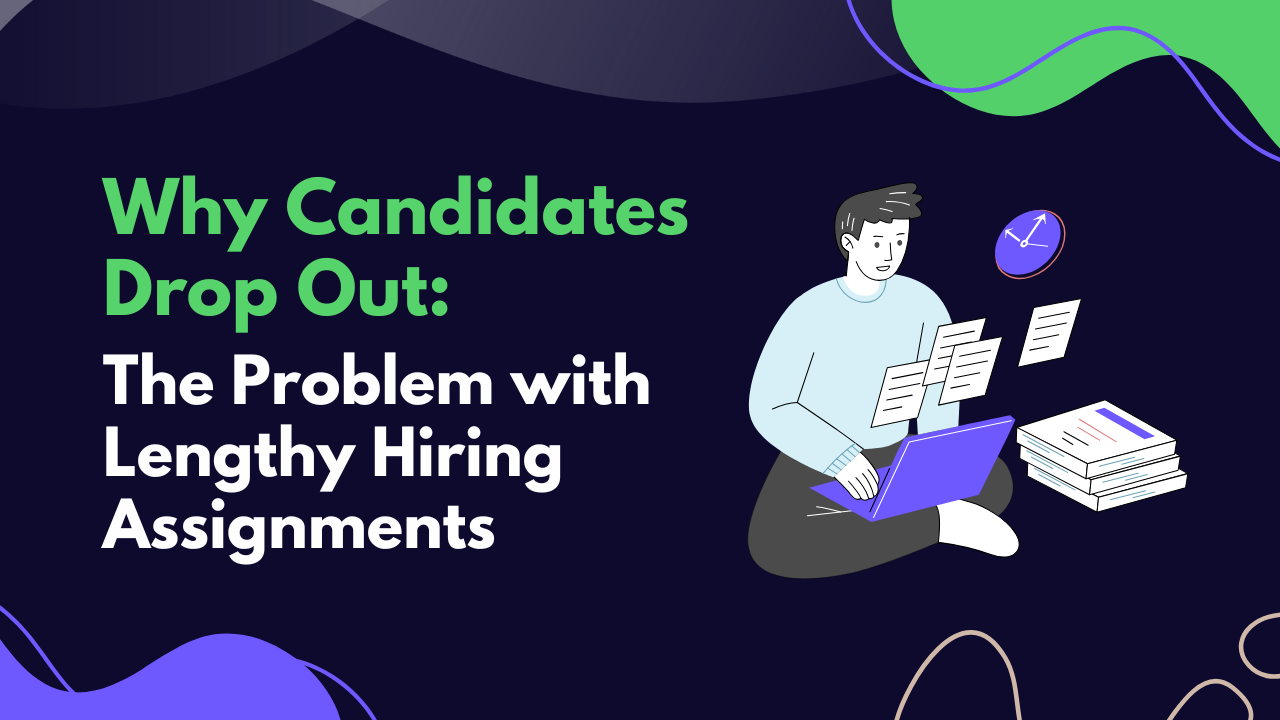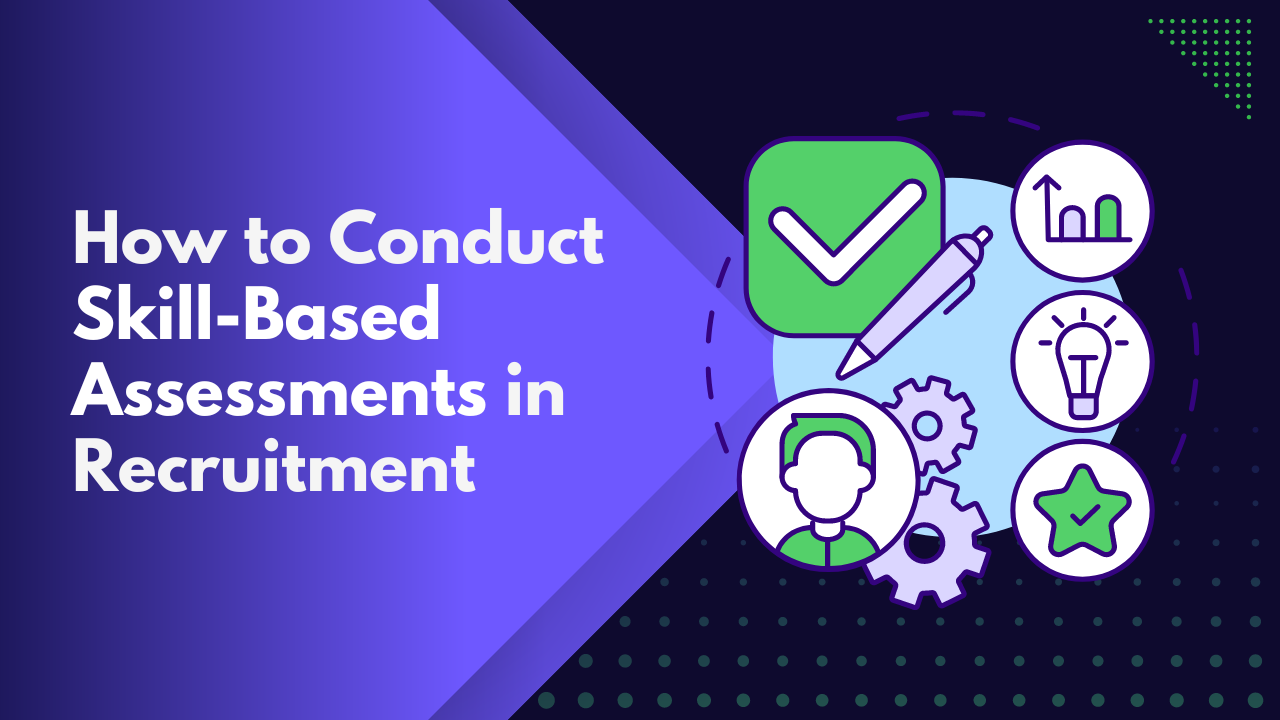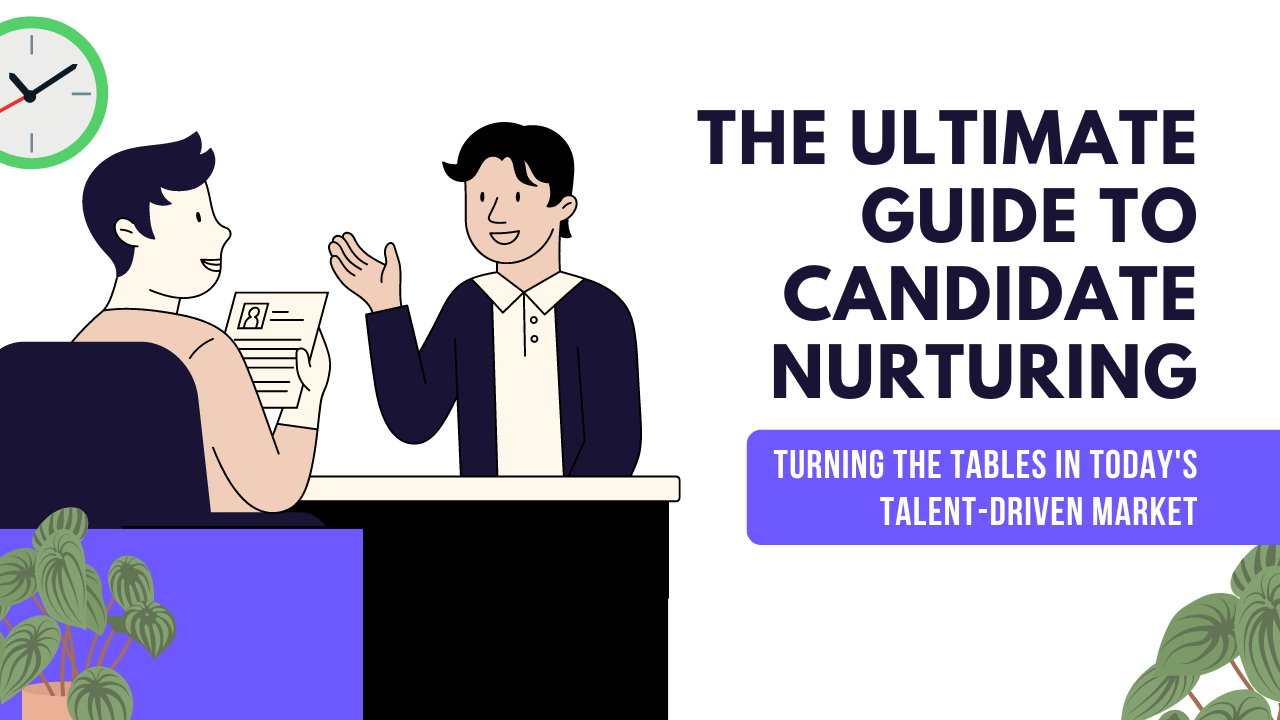Introduction: The Growing Issue of Candidate Dropouts in Hiring Processes
Finding the right candidate can feel like a challenge in itself. However, what many employers fail to realize is that the way they structure their hiring process can have a huge impact on whether top candidates actually stick around to the end. One of the most common reasons candidates drop out of the hiring process is lengthy or overly complex hiring assignments. While these assignments are designed to assess a candidate’s skills and suitability for the role, they can often have the opposite effect—deterring potential hires and leaving employers frustrated by the high dropout rates.
Recent research and industry trends show that as hiring assignments grow longer and more complex, the likelihood of candidates dropping out increases significantly. In fact, a 2023 study revealed that 57% of candidates abandoned applications that involved lengthy assessments. But what exactly drives candidates to disengage, and how can employers avoid this costly mistake?
In this blog, we will explore the psychology behind candidate dropout rates due to extensive tests, delve into real-world examples of businesses facing this issue, and provide actionable insights on how to redesign your hiring process to keep candidates engaged and eager to complete their applications. Understanding this phenomenon is critical not only for improving your hiring success but also for creating a positive employer brand that attracts top talent.

Why Lengthy Hiring Assignments Drive Candidates Away
When employers design hiring assignments, the goal is typically to assess a candidate’s skills, problem-solving abilities, and fit for the company. However, when these assignments become too lengthy or complex, they can inadvertently push candidates away. Understanding the reasons behind this dropout behavior is key to addressing the issue effectively.
Cognitive Load and Mental Fatigue
One of the primary reasons candidates abandon lengthy assignments is cognitive overload. Job seekers often apply to multiple positions at once, and the process of completing lengthy assignments adds a layer of stress to an already demanding task. In fact, research shows that the longer and more complex an assignment is, the more likely candidates are to experience mental fatigue. As a result, candidates may choose to disengage rather than invest further time and energy into an assignment that feels like a high-stakes test.
Time Constraints and Other Priorities
Another significant factor is time. Job seekers often have multiple commitments—whether they are currently employed, searching for other opportunities, or managing personal responsibilities. When hiring assignments take hours to complete, candidates may feel that the time investment isn’t worth the potential payoff, especially if they haven’t yet built a rapport with the employer. Furthermore, candidates may prioritize roles that offer a quicker and more straightforward application process. A lengthy assignment can unintentionally make the job seem more burdensome than rewarding, leading them to drop out.
Lack of Clear Communication and Transparency
Many candidates also drop out because of unclear expectations. If the assignment is not well-defined or if there is a lack of communication about the time commitment and purpose of the task, candidates may feel frustrated. They may wonder if the effort they’re putting into the task will even be considered or if it’s simply a way for the employer to screen out candidates. This uncertainty can result in a lack of motivation to complete the assignment.
The Impact on Employer Branding
The dropout rate caused by lengthy hiring assignments also has a ripple effect on an employer’s brand. Job seekers talk to each other, and word of a cumbersome hiring process can spread quickly, making it harder to attract top talent in the future. A lengthy, poorly managed process not only frustrates candidates but can also create a perception that the employer is inefficient or out of touch with modern hiring trends.
To keep candidates engaged and prevent dropouts, it’s crucial for employers to be mindful of how they design their hiring process. In the next section, we’ll discuss how to make your hiring assignments more candidate-friendly and why shorter, more focused assessments tend to yield better results.
Real-World Examples: How Lengthy Assignments Can Backfire
Lengthy hiring assignments can create significant barriers in the recruitment process, leading to high candidate dropout rates and missed opportunities to hire top talent. This issue is particularly prevalent in industries and roles that already struggle with talent shortages. Let’s explore real-world examples, industries most affected, and compelling statistics that highlight the pitfalls of drawn-out hiring tests.
Case Studies: When Lengthy Assignments Deter Talent
-
Tech Startups Losing Developers
A well-known tech startup required candidates for a software engineering position to complete a coding challenge that took over 8 hours to finish. While the company aimed to assess problem-solving skills deeply, it inadvertently alienated highly skilled candidates. Reports showed that 65% of applicants dropped out before completing the task, leaving the company with a smaller and less diverse talent pool. -
Creative Roles Facing Burnout
A marketing agency asked applicants for a copywriter position to write a full campaign proposal, including ad copies, taglines, and visuals. Many candidates felt the assignment resembled unpaid work. As a result, 7 out of 10 applicants dropped out during the hiring process. The company not only lost potential talent but also received negative feedback on employer review platforms.
Industries and Roles Most Affected
While lengthy hiring tests can affect any industry, some are particularly vulnerable:
- Tech and Software Development: Candidates in these roles often juggle multiple job offers and prioritize processes that respect their time.
- Marketing and Design Fields: Assignments that mimic unpaid work tend to frustrate candidates, especially freelancers.
- Mid-Level and Senior Roles: Professionals at this level are less likely to tolerate time-intensive tasks, as they have a better understanding of their worth and more responsibilities.
The Numbers Don’t Lie: Stats on Long Assignments
Statistics emphasize the damage caused by excessive hiring tasks:
- Dropout Rates: According to a Glassdoor survey, 60% of candidates abandon the application process when faced with lengthy assignments.
- Quality of Hires: Companies with streamlined processes report a 30% increase in candidate quality, compared to those with prolonged tests.
- Time-to-Hire: Organizations with shorter hiring processes fill roles faster by 25%, ensuring they don’t lose top talent to competitors.
These examples and data clearly show that lengthy assignments can harm your company’s hiring success. By frustrating candidates and increasing dropout rates, employers risk narrowing their talent pool and damaging their reputation as an employer of choice.
The Hidden Bias: How Excessive Assignments Exclude Working Professionals, Parents, and Diverse Candidates
Lengthy hiring assignments may seem like a fair way to assess candidates, but they often create unintended barriers for working professionals, parents, and individuals from diverse backgrounds. These groups, already managing time and resource constraints, are disproportionately affected by excessive tasks, potentially leading to a less inclusive hiring process.
Time Constraints of Working Professionals
Working professionals, especially those currently employed, often struggle to allocate time for drawn-out hiring tests.
- Balancing Job Responsibilities: Candidates juggling a full-time job cannot dedicate hours to complete multi-step assignments.
- Missed Opportunities: Many qualified individuals drop out of the process due to time constraints, depriving employers of experienced talent.
Challenges Faced by Parents and Caregivers
Parents and caregivers, managing family and work, are significantly disadvantaged by prolonged assessments.
- Limited Free Time: A multi-hour task is often incompatible with the demanding schedules of parents or caregivers.
- Unintentional Bias: By failing to account for these limitations, employers may unintentionally exclude qualified candidates with caregiving responsibilities.
Impact on Diverse Candidates
Excessive hiring tasks may also disproportionately affect candidates from underrepresented groups.
- Resource Accessibility: Not everyone has access to the tools, quiet spaces, or support systems needed to complete extensive tests.
- Financial Strain: Unpaid, time-intensive assignments may deter those who can’t afford to invest significant hours without guaranteed results.
The Broader Implications
When hiring processes fail to accommodate diverse circumstances, companies risk excluding valuable perspectives and skills from their teams. This lack of inclusion can result in:
- Homogeneous Teams: Reduced diversity in background, thought, and experiences.
- Weakened Employer Branding: A perception of inflexibility that harms a company’s reputation among potential applicants.
Striking a Balance
Employers must recognize the importance of designing hiring processes that accommodate all candidates, including working professionals, parents, and diverse applicants. Streamlined, equitable evaluations ensure a broader talent pool and promote a truly inclusive workplace.
In the following section, we’ll explore practical strategies to create fairer and more effective hiring processes that respect candidates’ time and diversity.

How to Redesign Your Hiring Process to Improve Candidate Retention
A lengthy and overly complex hiring process can deter talented candidates from completing applications or assignments. Redesigning your process with candidate retention in mind not only improves the experience but also ensures you attract and secure top talent. Here’s how to make your hiring process more candidate-friendly and efficient.
1. Simplify Hiring Assignments
Candidates value their time, so lengthy assignments can feel like an unnecessary hurdle. Here are ways to streamline them:
- Shorten Tasks: Limit assignments to tasks that take no more than 2–3 hours. This shows respect for candidates’ time while still giving you insight into their skills.
- Break Down Assignments: If in-depth testing is necessary, consider dividing it into smaller, manageable sections spread across different stages of the process.
- Provide Clear Instructions: Ambiguous tasks can frustrate candidates. Offer detailed guidance and examples to set them up for success.
By reducing task length and complexity, you make the process more inviting and less intimidating.
2. Balance Thorough Assessments with Respect for Time
While it’s essential to assess candidates thoroughly, there are ways to balance this need with respect for their time and commitments:
- Focus on Job-Relevant Skills: Tailor assessments to the skills directly related to the role, avoiding unnecessary or generic tasks.
- Set Realistic Expectations: Communicate upfront how long an assignment will take and why it’s critical for the role.
- Offer Flexibility: Allow candidates to choose when to complete the assignment, accommodating their schedules and responsibilities.
This approach demonstrates empathy, fostering a positive impression of your company
3. Leverage Alternative Evaluation Methods
Excessive assignments aren’t the only way to assess a candidate’s potential. Consider these alternative strategies:
- Conduct Skill-Based Interviews: Ask targeted questions that allow candidates to explain their problem-solving approaches or showcase industry knowledge.
- Review Portfolios: For creative or technical roles, portfolios can offer deeper insights into a candidate’s capabilities and style.
- Implement Work Simulations: Short simulations during interviews can provide real-time glimpses into a candidate’s thought process and teamwork abilities.
Using diverse evaluation methods makes the process fairer and reduces candidate fatigue.
4. Adopt a Candidate-Centric Approach
Shifting your focus to create a candidate-first hiring experience benefits both your company and the applicants. Here’s how:
- Streamline the Process: Minimize unnecessary steps and ensure seamless communication throughout the hiring journey.
- Gather Feedback: After completing assignments, ask candidates for feedback on their experience to identify improvement areas.
- Provide Timely Updates: Keep candidates informed about their status to avoid frustration and uncertainty.
These actions demonstrate your commitment to building a positive and inclusive recruitment environment.
5. Benefits of a Redesigned Hiring Process
Redesigning your hiring process with retention in mind has tangible benefits:
- Improved Candidate Experience: Candidates appreciate companies that respect their time, increasing their likelihood of accepting offers.
- Attracting Top Talent: A fair and efficient process signals professionalism and attracts high-quality applicants.
- Higher Completion Rates: Candidate-friendly processes reduce drop-off rates, ensuring a wider talent pool for your selection.
- Enhanced Employer Brand: A positive hiring experience boosts your company’s reputation, encouraging more applications in the future.
Conclusion: The Bottom Line for Hiring Success
Optimizing your hiring assignments isn’t just a nice-to-have—it’s essential for attracting and retaining top talent. Lengthy and excessive tasks can deter qualified candidates, exclude diverse talent, and negatively impact your employer brand. By rethinking your approach and focusing on efficiency, fairness, and respect for candidates’ time, you create a hiring process that works for both parties.
Take a moment to evaluate your current practices. Are your hiring assignments aligned with the role’s demands? Are they respectful of the candidate’s time and commitments? Adjustments made today can lead to long-term benefits, including better candidate experiences, stronger employer branding, and higher-quality hires.
Remember, the way you treat candidates during the hiring process reflects your company’s values. A thoughtful, streamlined process doesn’t just attract great talent—it sets the stage for their success within your organization. It’s time to make hiring about collaboration, not elimination.
Ready to transform your hiring process? Try TapTalent and discover how our platform simplifies candidate outreach and assessments, enhances efficiency, and helps you attract top-tier talent. Revolutionize the way you hire today!
Content
- Introduction: The Growing Issue of Candidate Dropouts in Hiring Processes
- Why Lengthy Hiring Assignments Drive Candidates Away
- Real-World Examples: How Lengthy Assignments Can Backfire
- The Hidden Bias: How Excessive Assignments Exclude Working Professionals, Parents, and Diverse Candidates
- How to Redesign Your Hiring Process to Improve Candidate Retention
- Conclusion: The Bottom Line for Hiring Success




